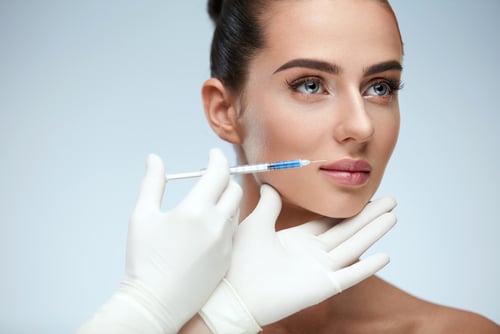Some Lesser-Known Facts About Botox & Fillers

How is Botox priced?
Patients will often find that the price of Botox can vary widely amongst providers even within the same geographic area. Some providers even participate in Groupon, but Botox is not a one-size-fits-all treatment, and an evaluation should be done in person on every patient prior to any treatment, which is why many reputable providers will not participate in Groupon for invasive treatments.
Some providers will inject and charge “by the area” with the forehead, crow’s feet, nasolabial folds, and the area between the brows where frown lines occur usually being considered separate areas. However, no two people are the same, and treating the area where lines and wrinkles occur with set amounts of Botox could under-treat one patient while overtreating another. This is why Dr. Sweat and his trained injector staff believe in charging Botox by the unit so that each patient gets a customized treatment plan based on his or her individual anatomy. These botulinum toxin treatments can also be adjusted for an individual budget, but keep in mind that if an area is under-treated, muscle function will not be fully paralyzed with Botox and function will return much faster, resulting in some patients feeling that Botox doesn’t work for them. Fillers may not reach maximal correction of the treated area but more can always be added later after the swelling resolves.
Remember, you have every right to ask about your injector’s experience, Botox strength, and even where the Botox or filler comes from, since it is illegal for a provider to purchase Botox or filler that is sold from outside of the U.S. Don’t be afraid to ask questions; it is your right as the consumer. If something seems to be priced well below everyone else in town, there’s usually a reason.
Can Botox and fillers be used in other areas?
As with any medication, Botox and most dermal fillers receive approval from the FDA for specific uses, but it is completely safe and common practice to use Botox to relax various areas of hyperexpressive muscle and dermal fillers in other areas in which volume loss needs to be corrected. This can include other areas of the face or even other areas of the body. While this is a safe and effective practice, this is commonly known as “off-label” use, as it deviates from the specific indication that the product might have received from the FDA. Over time, product manufacturers often seek other indications for their products, but the arduous process of getting FDA approval can take years. It is important to understand that, just because a product is being used outside of its FDA-labeled indication, this does not mean that the practice is unsafe or experimental.
Can filler be reversed?
Depending on the type of dermal filler injections, there may or may not be an agent that can be used to dissolve the product. All filler treatments in the Juvederm family are manufactured using hyaluronic acid (HA), a naturally occurring component in the skin. Additionally, all HA injectable treatments can be dissolved with a product called hyaluronidase. This can be helpful if a treatment area is overfilled or if a patient is unsatisfied with the look or feel of a product after injection. In the unlikely event of a vascular compromise, the skin and tissue can be saved by using the dissolving agent to restore blood flow to the troubled area. Not all dermal fillers will have a dissolving agent, so it is important to ask your injector what the product contains and if it can be reversed if necessary.
Can Botox be reversed?
Botox is slowly metabolized by the body and unfortunately, once it is injected, it cannot be removed. In the unlikely event that a side effect from the Botox occurs, such as a droopy eyelid, there are medications that can but used to stimulate the eyelid muscle to make it function better, but time is the best treatment as Botox wears off over 3-4 months. Even if you have had Botox before, if you are visiting an injector for the first time, it may be wise to go a little light on the treatment and add more after the Botox has reached maximal effect at 2 weeks.
I have a big event coming up and I want to look my best. When is the optimal timing of an injection treatment before my event?
In general, it is best to allow at least 4-6 weeks before a big event to inject Botox or fillers. Because Botox takes 2 weeks to achieve maximum effect and reduce the appearance of facial wrinkles, waiting 4-6 weeks will allow enough to pass for a touch-up treatment and give additional time to pass for the effects of the second treatment to appear. If a patient is receiving filler injections and Botox for the first time at J. Sweat Plastic Surgery, it may be best to be conservative with the first treatment and add more at the second treatment if necessary so as not to overtreat. Both Botox and fillers can result in bruising since a needle is used to penetrate the skin. This suggested timeframe also allows time for the bruise to go away and any swelling associated with the filler injection to subside. It also allows for time for the filler to be reversed in the unlikely event that too much filler is placed or the patient is unhappy with the results. Injecting filler or Botox in the week prior to an event is usually not a good idea as it does not allow time for bruising and swelling to subside or for the product to settle into place.



























